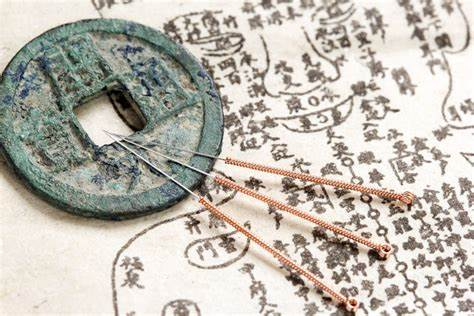Acupuncture, an essential component of Traditional Chinese Medicine (TCM), has a history that stretches back thousands of years. It is a practice that involves inserting thin needles into specific points on the body to balance the flow of energy or "qi" (pronounced "chee"). This article explores the origins of acupuncture and its development over time.
Discover the Ancient Origins of Acupuncture in TCM
Ancient Beginnings of Acupuncture
The earliest roots of acupuncture can be traced back to over 2,500 years ago in ancient China. Evidence from archaeological findings, including stone needles, indicates that ancient Chinese healers used sharp objects to stimulate specific points on the body for therapeutic purposes.
Stone and Bone Tools
During the Neolithic period, primitive forms of acupuncture were practiced using stone tools known as "Bian Shi." These tools were later replaced by more refined instruments made of bone and bamboo.
The Huangdi Neijing
The first comprehensive documentation of acupuncture techniques and theories is found in the Huangdi Neijing (The Yellow Emperor's Inner Classic), a medical text dating back to the 3rd century BCE. This ancient treatise outlines the principles of acupuncture, meridian pathways, and the balance of yin and yang.
Philosophical Foundations
Acupuncture is deeply rooted in TCM philosophy, which views the human body as a microcosm of the universe. The practice is based on the belief that health is achieved through the harmonious flow of qi along meridian pathways. Any disruption in this flow can lead to illness, which acupuncture aims to correct.
Evolution through Dynasties
Acupuncture continued to evolve through various Chinese dynasties. During the Han Dynasty (206 BCE - 220 CE), it gained prominence and became more systematically practiced. Subsequent dynasties saw further refinements and documentation of acupuncture techniques.
Influence of Daoism and Confucianism
The development of acupuncture was influenced by Daoist and Confucian philosophies, which emphasized harmony and balance. These philosophies shaped the understanding and application of acupuncture in achieving health and well-being.
Spread to Neighboring Cultures
Acupuncture spread to neighboring countries such as Japan, Korea, and Vietnam, where it was integrated into local medical practices. Each culture added its own interpretations and techniques, enriching the practice of acupuncture.
Introduction to the West
Acupuncture was introduced to the Western world in the 17th century through the reports of Jesuit missionaries and travelers. However, it wasn't until the 20th century that it gained wider acceptance and recognition in Western medicine.
Modern Scientific Validation
In recent decades, numerous scientific studies have been conducted to understand the mechanisms and efficacy of acupuncture. These studies have provided evidence supporting its effectiveness in treating various conditions, leading to its integration into modern healthcare systems.
Contemporary Applications
Today, acupuncture is widely practiced around the world and recognized for its therapeutic benefits. It is used to treat a range of conditions including chronic pain, stress, and various internal disorders. Modern practitioners combine traditional techniques with contemporary medical knowledge.
Conclusion
Acupuncture, with its deep historical roots and philosophical underpinnings, remains a cornerstone of Traditional Chinese Medicine. Its journey from ancient stone tools to modern medical acceptance illustrates the enduring significance of this ancient healing art.






